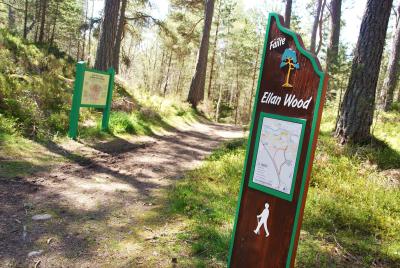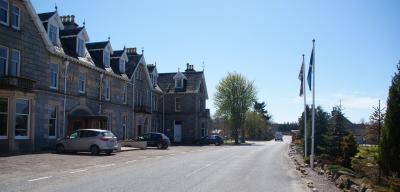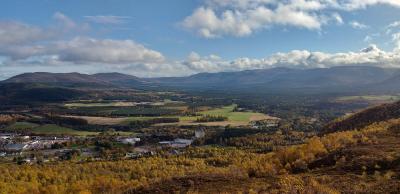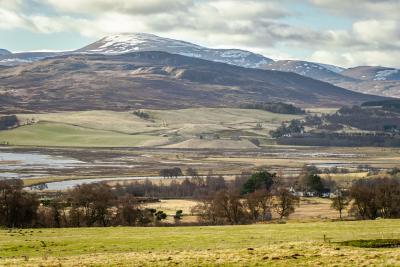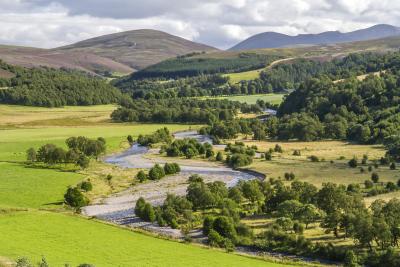Dulnain Bridge paths
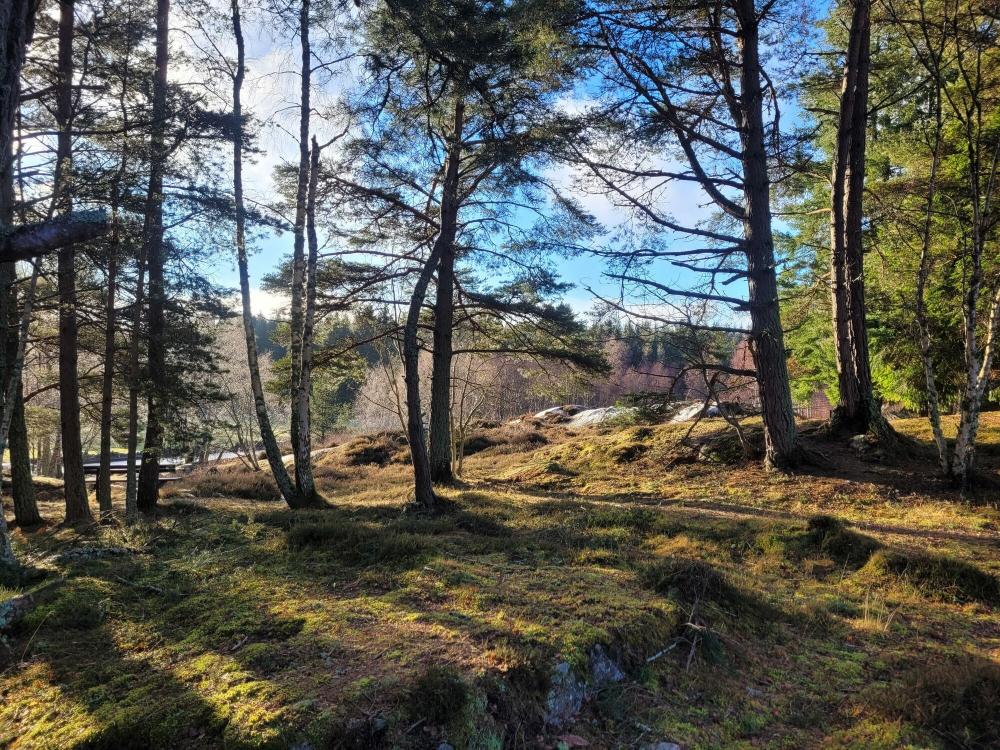
Dulnain Bridge, and the crofting community of Skye-of-Curr, retain much of their original character. Sir James Grant gifted ground to local people, allowing them to build a croft, grow crops and keep livestock. The display of implements you see outside Dulnain Bridge gives some idea of the effort that would have been involved in working the land.
Pictish stone carvings have been found nearby and two Stone Age coffins were discovered at a burial cairn in Curr Wood. The first stone bridge, built around 1754, was one of the few crossing points connecting Moray with the south, however this was washed away and replaced in 1830 by the current single-span stone arch bridge.
A network of five paths and tracks around Dulnain Bridge explore the lovely pinewoods, the geological wonders of the Roche Moutonnees and follow the River Dulnain. With views of Muckrach castle, the River Spey and the Cairngorms there is much waiting to be discovered.
Dulnain Bridge, and the crofting community of Skye-of-Curr, retain much of their original character. Sir James Grant gifted ground to local people, allowing them to build a croft, grow crops and keep livestock. The display of implements you see outside Dulnain Bridge gives some idea of the effort that would have been involved in working the land.
Pictish stone carvings have been found nearby and two Stone Age coffins were discovered at a burial cairn in Curr Wood. The first stone bridge, built around 1754, was one of the few crossing points connecting Moray with the south, however this was washed away and replaced in 1830 by the current single-span stone arch bridge.
A network of five paths and tracks around Dulnain Bridge explore the lovely pinewoods, the geological wonders of the Roche Moutonnees and follow the River Dulnain. With views of Muckrach castle, the River Spey and the Cairngorms there is much waiting to be discovered.
Quick resources
Paths and trails
Need to know
We hope you enjoy exploring the trails around Dulnain Bridge, but please do so responsibly. The National Park is a special place with rare wildlife, some of which is sensitive to disturbance. You can help protect the local wildlife by following all signs and keeping dogs close by and on a lead where requested.
Please help protect ground nesting birds by keeping your dog on a lead and on the path from April to mid-August.






